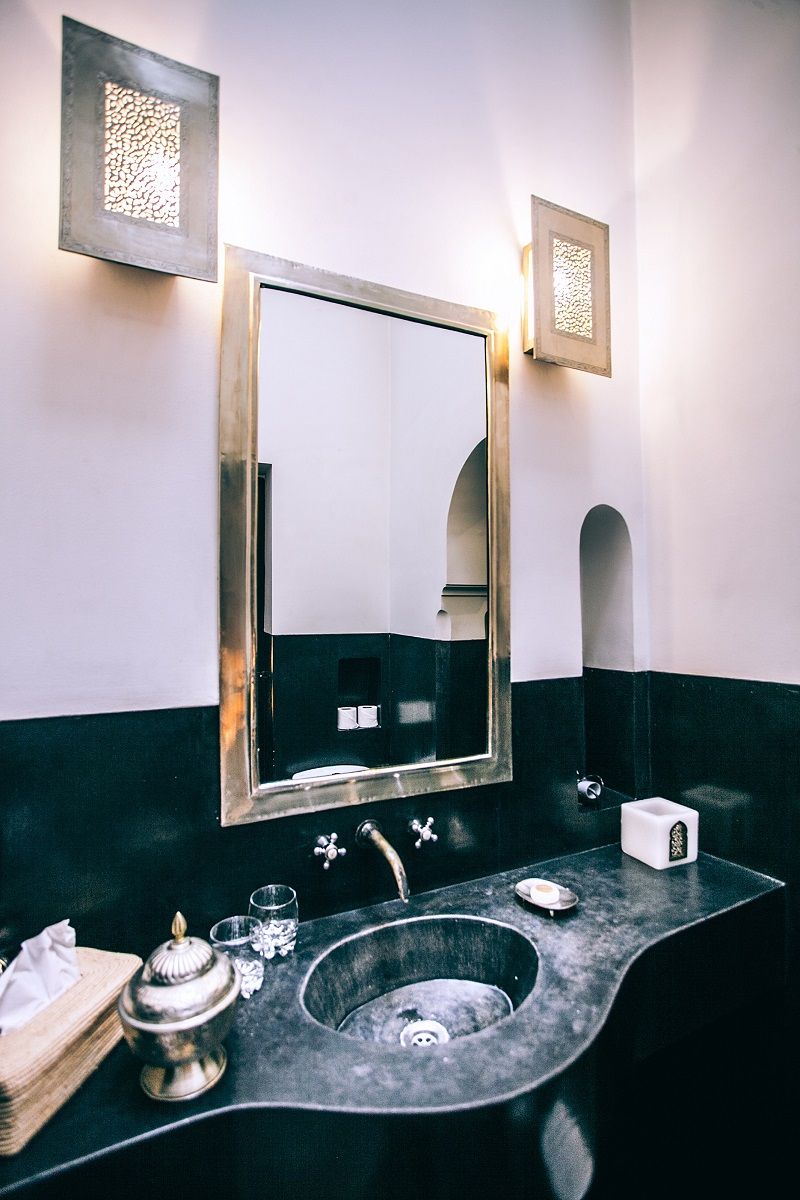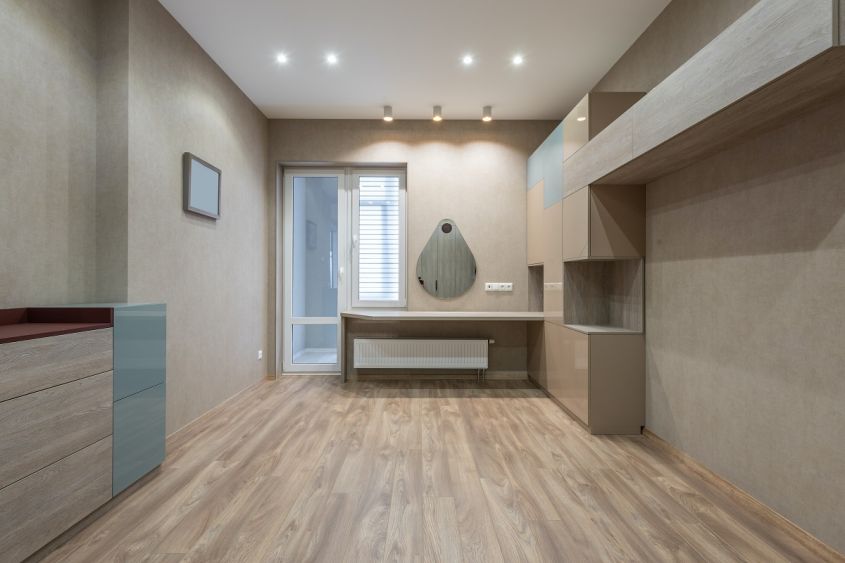A niche in the wall it can be an extremely interesting element for interior design as it gives dynamism and offers a thousand different furnishing and decoration possibilities. Whether it already exists in the house or to be created from scratch, it is very useful for saving space by creating very versatile decorative stitches.
They can be made in horizontal, thus becoming storage compartments or practical shelves, or vertical, purely decorative, perfect to implement the light design of an environment.
The possibilities are almost endless, the limits are given by space and materials: here are some practical tips on how to create and make the most of them.
How to make a niche in the wall
Until the postwar period, it was quite common to build niches of various sizes in houses and apartments. With the different building needs this architectural custom has been lost, so in modern houses wanting a niche means building a new one, having to partially sacrifice the floor area.
However, while making the walls thicker, they make it possible to recover otherwise unused spaces. They can be made in masonry when or in wood or plasterboard: the first is the ideal solution when you have a particularly large and bright room, and you want a final work. In wood or plasterboard, on the other hand, they are lighter and suitable for decorative niches or with a particularly recognizable and personal style. For example, in the bedroom you can create small, horizontal niches on a wall that act as open shelves for objects and clothes, or in the living room to create decorative shelves.
 Photo Pexels | Maria Orlova
Photo Pexels | Maria Orlova
The niches in these light materials can be made do-it-yourself: for example, if you choose pine wood panels, you can build the frame for the basic structure at home and create niches of the desired size, which have the advantage of being resistant but easy to dismantle: the perfect solution if we like to change the style of your apartment often, or if you are renting and cannot create a definitive job.
When building a wall niche, the height of the space must also be taken into account very well, not just the depth, as the shape could be a great tool to optically enlarge it.
Niches: original ideas for furnishing them
The niche in the wall, as we have said, can have several both practical and purely decorative purposes: in any case it will be very refined and elegant, adding a detail to the room. Here are some ideas on how to best furnish our niche.
The decorative niche
 Photo Pexels | Ksenia Chernaya
Photo Pexels | Ksenia Chernaya
Decorating with niches is very elegant and has a old charm. For example, you can create a wide and not too deep one for hanging paintings or even create a fresco contemporary, recalling the ancient religious newsstands. Even statuettes, plants and flowers, valuable objects is optimal.
Another idea is that of create several of the same size, all decorated in the same way, also perfect for inserting ad hoc lighting with spotlights.
Finally, you can play with color: you can use the same color as the rest of the room or choose it in contrast, either painted or with wallpaper.
The library niche
Instead of setting up a bookcase, placing books or records in a niche is very nice and makes the environment more welcoming. In fact, it allows you to fill the wall in the best possible way, leaving no empty spaces and allowing you to furnish in a full and orderly way. Such a niche is perfect in the living room but also in the bedroom, to create a relaxing private reading corner.
In this case, you can choose to paint it a darker color than the rest of the environment to give a feeling of greater depth.
A functional niche
 Photo Pexels | Max Vakhtbovych
Photo Pexels | Max Vakhtbovych
Especially in the bathroom and in the kitchen, spaces to hold objects are never enough: a niche is what it takes to store even products used daily in an orderly and protected manner. Then the effect is much neater than those of the shelves, wall units and cabinets, are more practical because they have no doors and the dust that accumulates much less.
In the kitchen they can also be obtained working on existing furniture, eliminating the doors: to avoid a sloppy effect, as if a piece were missing, just paint the outer edge of a different color but in line with that of the kitchen.
A niche in the wall it can be an extremely interesting element for interior design as it gives dynamism and offers a thousand different furnishing and decoration possibilities. Whether it already exists in the house or to be created from scratch, it is very useful for saving space by creating very versatile decorative stitches.
They can be made in horizontal, thus becoming storage compartments or practical shelves, or vertical, purely decorative, perfect to implement the light design of an environment.
The possibilities are almost endless, the limits are given by space and materials: here are some practical tips on how to create and make the most of them.
How to make a niche in the wall
Until the postwar period, it was quite common to build niches of various sizes in houses and apartments. With the different building needs this architectural custom has been lost, so in modern houses wanting a niche means building a new one, having to partially sacrifice the floor area.
However, while making the walls thicker, they make it possible to recover otherwise unused spaces. They can be made in masonry when or in wood or plasterboard: the first is the ideal solution when you have a particularly large and bright room, and you want a final work. In wood or plasterboard, on the other hand, they are lighter and suitable for decorative niches or with a particularly recognizable and personal style. For example, in the bedroom you can create small, horizontal niches on a wall that act as open shelves for objects and clothes, or in the living room to create decorative shelves.
 Photo Pexels | Maria Orlova
Photo Pexels | Maria Orlova
The niches in these light materials can be made do-it-yourself: for example, if you choose pine wood panels, you can build the frame for the basic structure at home and create niches of the desired size, which have the advantage of being resistant but easy to dismantle: the perfect solution if we like to change the style of your apartment often, or if you are renting and cannot create a definitive job.
When building a wall niche, the height of the space must also be taken into account very well, not just the depth, as the shape could be a great tool to optically enlarge it.
Niches: original ideas for furnishing them
The niche in the wall, as we have said, can have several both practical and purely decorative purposes: in any case it will be very refined and elegant, adding a detail to the room. Here are some ideas on how to best furnish our niche.
The decorative niche
 Photo Pexels | Ksenia Chernaya
Photo Pexels | Ksenia Chernaya
Decorating with niches is very elegant and has a old charm. For example, you can create a wide and not too deep one for hanging paintings or even create a fresco contemporary, recalling the ancient religious newsstands. Even statuettes, plants and flowers, valuable objects is optimal.
Another idea is that of create several of the same size, all decorated in the same way, also perfect for inserting ad hoc lighting with spotlights.
Finally, you can play with color: you can use the same color as the rest of the room or choose it in contrast, either painted or with wallpaper.
The library niche
Instead of setting up a bookcase, placing books or records in a niche is very nice and makes the environment more welcoming. In fact, it allows you to fill the wall in the best possible way, leaving no empty spaces and allowing you to furnish in a full and orderly way. Such a niche is perfect in the living room but also in the bedroom, to create a relaxing private reading corner.
In this case, you can choose to paint it a darker color than the rest of the environment to give a feeling of greater depth.
A functional niche
 Photo Pexels | Max Vakhtbovych
Photo Pexels | Max Vakhtbovych
Especially in the bathroom and in the kitchen, spaces to hold objects are never enough: a niche is what it takes to store even products used daily in an orderly and protected manner. Then the effect is much neater than those of the shelves, wall units and cabinets, are more practical because they have no doors and the dust that accumulates much less.
In the kitchen they can also be obtained working on existing furniture, eliminating the doors: to avoid a sloppy effect, as if a piece were missing, just paint the outer edge of a different color but in line with that of the kitchen.


